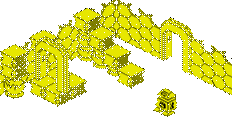Sony Playstation
Vital Statistics
Introduced
December 1994
|
|
![]()
What's it like today?
|
Playstation
The Sony Playstation was launched in December 1994 in Japan and in September 1995 to Europe and North America as Sony's first venture into the console market. The history of the project spans back almost 8 years previous, when Nintendo and Sony were in partnership to develop the CD-ROM technology for games consoles (at the time for Nintendo's SNES). As part of the deal, Sony would also have rights to develop their own Super-Famicom-compatible console which would play both SNES games and another Sony-proprietary format. However, this agreement took a turn for the worse when in May 1991 Nintendo realised the original contract permitted Sony full control of all SNES CD-ROM titles. Following the collapse of the joint project, Sony decided to use the investment they had made so far and put together a new standalone console themselves. This was to be the "PlayStation". It went on to become the first "computer entertainment platform" to ship 100 million units, which it had reached 9 years and 6 months after its initial launch.
When launched, the PlayStation was ahead of its time, technologically. It competed directly with Sega's Saturn console, Atari Jaguar, and the Nintendo 64. The PlayStation's success is considered to be largely to their strategic partnering with games developers to release many games of differing genres ready for launch, and to provide developers with unrestricted access to the core hardware.
Some technical capabilities: The CPU is capable of 30 MIPS (Million Instructions Per Second), the GPU (graphical processing unit) can render 360,000 polygons per second and it can display sprites from 1x1 pixel up to 256x256 pixels in size.
 PSone
PSone
In 2000, Sony released a physically smaller and redesigned version of the PlayStation, dubbed the "PS one". Sony also released a small LCD screen and an adapter to power the unit for use in cars. The PS one is fully compatible with all PlayStation software. There were three differences between the PS one and the original, the first one being cosmetic change to the console , the second one was the home menu's Graphical User Interface, and the third being added protection against the "modchip" by changing the internal layout and making previous-generation modchip devices unusable. The PS one also lacks the original PlayStation's parallel and serial ports. The serial port allowed multiple consoles to be connected for multiplayer user or for connecting a console to debugging software. After the initial PlayStation was redesigned into the PSone and other follow-on PlayStation-compatible devices, the term "PSX" became synonymous with the PlayStation family in general, meaning anything that could play original PlayStation games.
The Psone was discontinued on 23rd March 2006.
The Games
 Of course what defines the success of a console are the games. The PlayStation was easy to develop for, and even at launch Sony ensured their new console gave new users plenty of choice. A total of ~1,100 titles were released for the Playstation during its lifetime.
Of course what defines the success of a console are the games. The PlayStation was easy to develop for, and even at launch Sony ensured their new console gave new users plenty of choice. A total of ~1,100 titles were released for the Playstation during its lifetime.
The Gran Turismo series of car racing games were eagerly awaited, and were released only on the PSX (PlayStation) platform. A promotional demo CD came bundled with PlayStations during Christmas 1996, and contained arcade mode, 3 cars and 1 track. When Gran Turismo 2 was released in 1999, it came with an astonishing 650 cars, and many new tracks. Subsequent 'GT' games were released only for the PS2, PS3 and PSP consoles.











